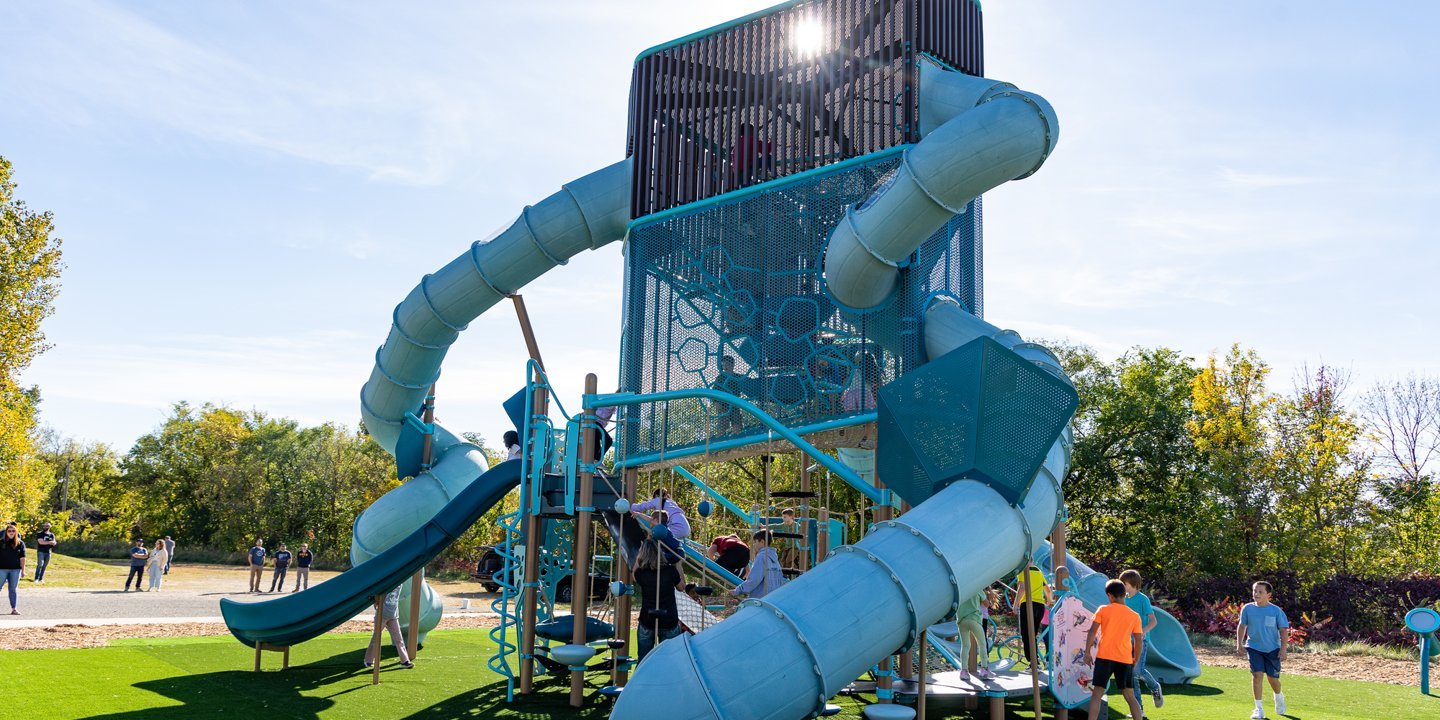Fair Play

It wasn’t so long ago that designing play spaces to be more inclusive was an up-and-coming trend, whereas these days it’s becoming more the norm.
“Schools are absolutely helping to lead the charge,” agreed Jill Moore, inclusive play specialist for a Delano, Minn.-based playground design firm and equipment manufacturer. She described a bill in Georgia that was recently signed into law, requiring that all elementary schools built after July 1, 2027, include universally designed playgrounds. “These spaces must meet specific criteria, including sensory-rich environments, minimum square footage, fencing, shaded areas, inclusive surfacing, and equipment like communication boards, accessible swings, and wheelchair-compatible play structures.
“A powerful example of school-driven inclusion can be found at Glen Lake Elementary in Minnesota,” continued Moore. “Serving a high population of students with special needs, the school’s inclusive playground was inspired and shaped by the students themselves—proof that meaningful inclusion often starts from the ground up.”
Moore said it’s essential to engage individuals with disabilities and their families, therapists, and educators early in the design process. “We strongly believe in the principle of ‘Nothing about us, without us.’ By giving end users a seat at the table, we’re not just designing for them, we’re designing with them. It creates space for authentic advocacy, and ensures the final environment truly reflects their needs and experiences.”
Moore, who uses a wheelchair, said that when she was growing up “the focus was often just on getting things done. But now, we recognize the power of asking, ‘What makes a great day for you?’ Or ‘What helps you feel included and successful?’ That’s where meaningful, inclusive design begins.”